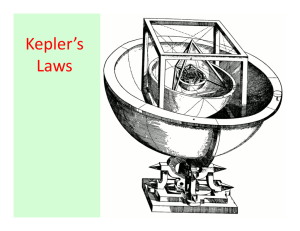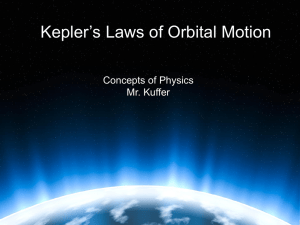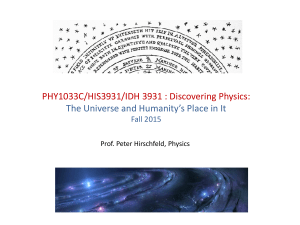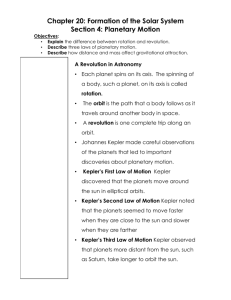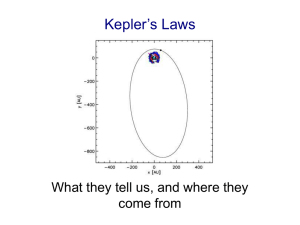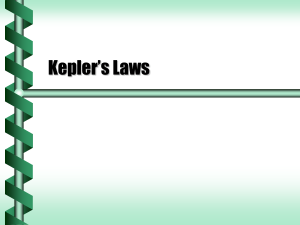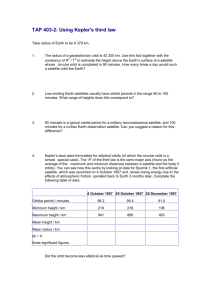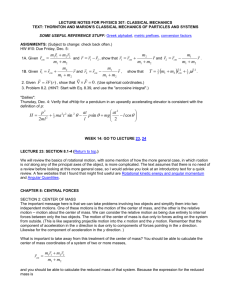Kepler's Laws
advertisement
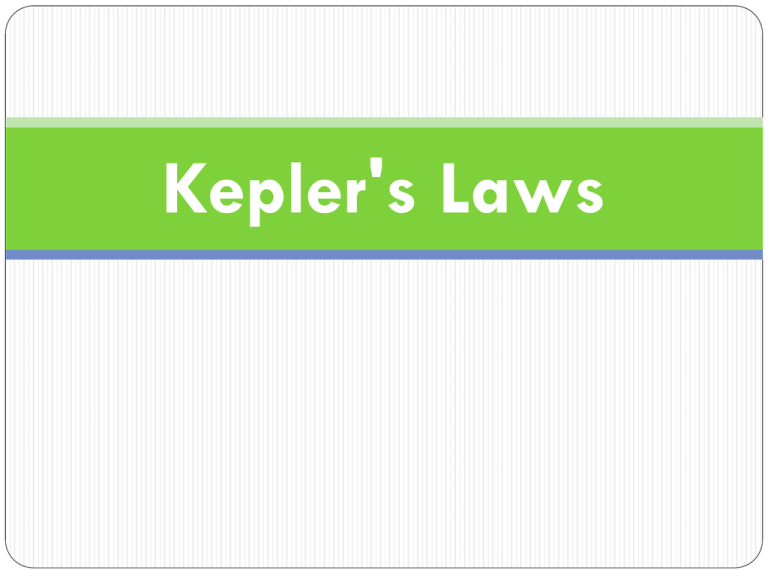
Kepler's Laws History Lesson Tycho Brahe – had a state of the art observatory where he plotted the orbits of planets for years. • He was not well respected as a scientist • His theory was that the sun orbited earth and the other planets all orbited the sun Johannes Kepler – worked for Tycho and used his data to derive his three laws of orbital motion. • Kepler could not explain why the planets obeyed these laws. • Planetary motion could not fully be explained until Newton’s Law of Universal Gravitation Kepler’s First Law The planets orbit the sun in elliptical paths The sun is at one focus of the ellipse Newton explained this by showing that the force of gravity decreased with distance (Inverse Square Law) Closed orbits must have the form of ellipses or circles due to this Not all orbits are closed A comet that passes by the sun once and leaves the solar system has a hyperbolic or parabolic orbit Kepler’s 2nd Law As a planet moves in its orbit, it sweeps out an equal amount of area in an equal amount of time. In other words, the object in orbit travels the fastest when it is closest to the body it is orbiting This can be explained in terms of angular momentum… The force of gravity on a planet is directly toward the sun (inward – along the radius). Therefore, gravity exerts no torque and angular momentum must be conserved (L = mvr). If r is smaller, then v must increase in order to keep angular momentum constant. Kepler’s 3rd Law The period of an orbit increases as the orbital radius increases. This can be derived using Newton’s Law of Universal Gravitation. Fc = Fg mv GMm 2 r r 4 r T GM 2 3 2 Cancel m Substitute for v Solve for T Kepler’s 3rd Law Simplified T2 = kR3 k = 1 for our solar system and the following units (other wise k = 3.35x10^18 m^3/s^2) T = period in Earth years R = orbital radius in terms of Earth’s orbital radius 1 AU = 1 Astronomical Unit = average distance from the Earth to the sun (1.50x10^11 m) Using Kepler’s Laws 1) The Earth’s orbit is slightly elliptical. In fact, the Earth is closer to the sun during the northern hemisphere winter than it is during the summer. Is the speed of the Earth during the winter _____ during the summer (northern hemisphere)? greater than less than the same as its speed 2) The Earth revolves around the sun once a year at an average distance of 1.50 x 1011 m. Use this information to calculate the mass of the sun. Using Kepler’s Laws 3) Find the period of revolution for the planet Mercury, whose average distance from the Sun is 5.79 x 1010 m. 4)Jupiter has an orbital period of 11.86 years. How far away from the Sun is Jupiter (in AUs)? Answers and Homework Answers to practice questions: 2) Mass of the Sun = 1.98892 × 1030 kilograms 3) Orbital period of Mercury = 87.9 Earth days 4) Jupiter’s mean orbital radius = 5.20 AU Try page 272 1-3


